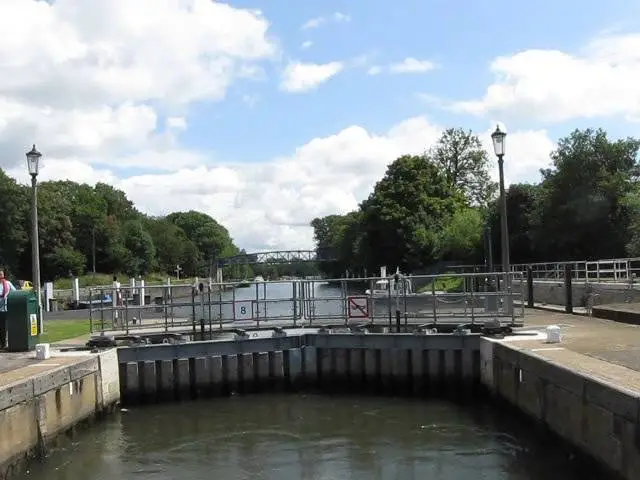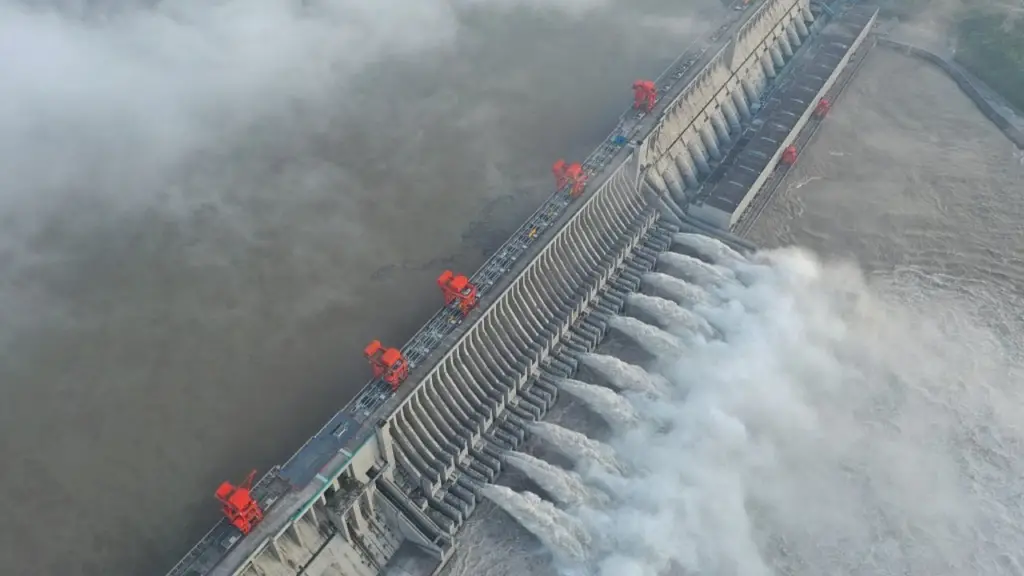If you’re into hydro power generation, or water resource management; you might know that both weir and barrage help regulate water flow and control water levels in a river or water body. But do you know there’re key differences between them.
Although both can have similarities in purpose like power generation, flood control, water storage but still they differ in terms of function, design, construction, and purpose.
That’s why it’s essential to know the differences between a weir and a barrage to choose the right type of structure for your specific project and ensure success.
Let’s discover the key differences between the weir and barrage and unlick the mystery of how a weir and barrage impact our rivers and water management.
Do you know? The world’s largest weir is the Kallanai Dam in Tamil Nadu, India, which was built over 2,000 years ago and still functions today.

The answer
A weir is a simple structure that is built through an open channel or a river to prevent flood, measure the discharge, and control water flow and doesn’t have gates to regulate. Whereas, a barrage is a bit more complex structure than weir having gates can be opened or closed to control the amount of water to discharge downstream of the river.
Barrages are more used in rivers for diverting water to irrigation canals and other water supply schemes. So, we can say that weir is simple whereas barrage and complex. And also weir is less costly to construct than a barrage.
Also Read: DPC full form in civil engineering – Damp Proof Course
A barrage can be constructed near a city to prevent flooding while a weir can be used in a tourist destination to raise water level in a stream and make a water fall.
Like Us on Facebook!
Do you know? A weir is an obstacle used to control the flow of water, while a barrage is a large dam used to generate electricity.
Subscribe Us on YouTube!
What is a weir?
A weir is a type of dam or barrier built across a river to control the flow of water. Some key features or distinctions of a weir are:
Do you know? The first weirs were used for irrigation and flood control in ancient civilizations such as Egypt and Mesopotamia.
Design: A weir typically has a shallow, sloping structure that allows water to flow over it and into a downstream channel. The height of the weir is adjustable, and it is designed to maintain a constant water level upstream.
Function: The primary purpose of a weir is to raise water level, Semi-control River to prevent flooding, and regulates water levels in a river.
Do you know? The Aswan High Dam in Egypt is a famous barrage that provides irrigation and hydroelectric power to the region.

Construction: Weirs are typically made of concrete, masonry, or other durable materials and are built into the riverbed. They are relatively simple structures and can be built relatively quickly and inexpensively.
Operation: Weirs are sold structures that don’t have gates or sluices for regulation.
Do you know? In the UK, the Teddington Lock is a famous weir that serves as a navigation point for boats on the River Thames.

What is a barrage?
A barrage is a type of dam-like structure used for water management and control. It is typically built across a river or canal to impound water and regulate its flow.
Also Read: What Is The Difference Between A Barrage And A Dam
The primary purpose of a barrage is to provide water for irrigation, flood control, hydroelectric power generation, or navigation. A barrage typically has a series of gates that can be opened or closed to control the flow of water, and it is designed to withstand the forces of water pressure and river flow.
Unlike a dam, a barrage typically does not store large volumes of water; instead, it manages water flow by controlling the height of the water in the impoundment.
Purpose: A barrage is a water control structure used to store and regulate water flow in a river or canal, to provide a consistent supply of water for irrigation, drinking, or generating hydropower.
Do you know? Weirs can also be used to measure the flow of water in a river by measuring the height of water above the weir.
Design: A barrage typically has a larger height and width than a weir, and is made up of a series of gates or sluices that can be opened or closed to control the flow of water.
Do you know? The Three Gorges Dam in China is the largest hydroelectric dam in the world and serves as both a barrage and a weir.

Construction: Barrage construction is typically more complex than weir construction, and often involves building a dam-like structure across the river or canal, with a series of gates and turbines installed for water control.
Do you know? Barrages can have negative impacts on the environment and local communities, including displacement of people and loss of natural habitats.
Function: Unlike a weir, a barrage can also generate electricity through hydro power generation by utilizing the stored water and controlling the water flow through turbines.
Also Read: 9+ Famous Historic Arch Dams that revolutionized designing process
Do you know? The construction of large barrages and weirs often involves complex engineering and technical considerations, including the impact on local geology and wildlife.
Let’s now summarize the differences between a weir and a barrage:
| Feature | Weir | Barrage |
| Function | A weir is a dam-like structure that is built to raise the water level in a river or stream. | A barrage is a dam-like structure that is built to control the flow of water in a river or canal. |
| Construction | A weir is usually made of concrete, stone or masonry and is relatively simple in construction. | A barrage is more complex in construction and is made of concrete, steel, or a combination of materials. |
| Design | A weir is designed to have a small opening at the crest to allow water to flow over it. | A barrage is designed to have several openings, or sluice gates, to control the flow of water. |
| Purpose | The main purpose of a weir is to maintain a certain water level in a river or stream for irrigation, flood control, or power generation. | The main purpose of a barrage is to control the flow of water in a river or canal for irrigation, navigation, or flood control. |
| Operation | A weir operates passively and does not have any active control mechanisms. | A barrage has active control mechanisms, such as sluice gates, to regulate the flow of water. |
| Power Generation | A weir can generate power by using the energy of falling water. | A barrage can also generate power, but it is more complex and requires active control mechanisms. |
| Maintenance | A weir is relatively simple to maintain and usually requires only periodic cleaning. | A barrage requires more maintenance, including regular inspection and repair of the sluice gates and other control mechanisms. |
| Cost | A weir is generally less expensive to construct and maintain than a barrage. | A barrage is more expensive to construct and maintain due to its complexity. |
| Environment Impact | A weir can have a negative impact on the environment, as it can change the flow patterns of the river and affect fish migration. | A barrage can also have a negative impact on the environment, but it is usually less significant than a weir. |
| Location | A weir is usually located in a natural river or stream. | A barrage is usually located in a man-made canal or river channel. |
Do you know? Many weirs and barrages are used for recreational purposes, such as boating and fishing.
Also Read: What is Canal Lining, Types of Canal Lining





















